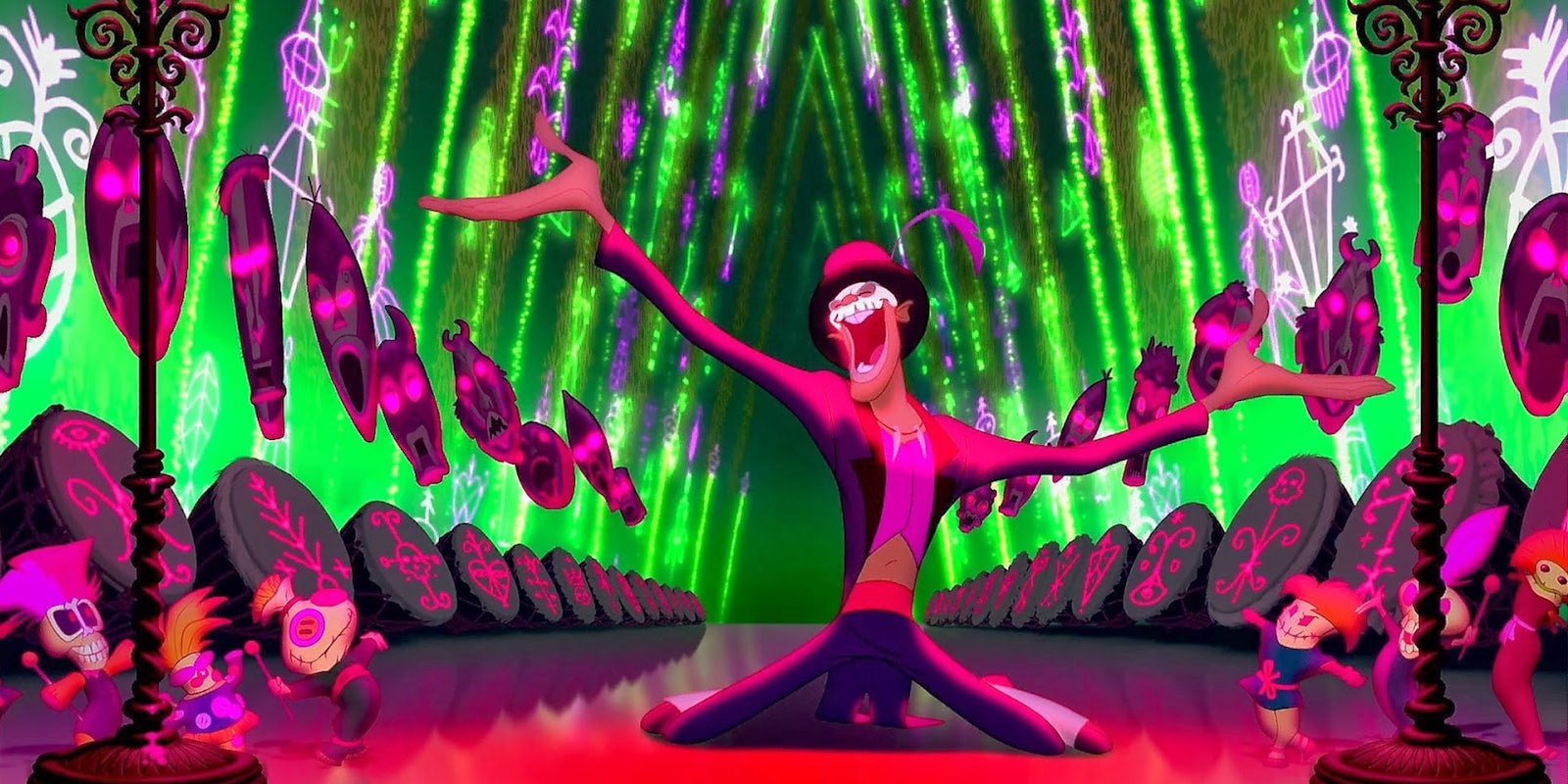101 Dalmatians is ostensibly about cute little animals and quaint 1950s London, but many of us remember it most for one thing: the image of Cruella de Vil’s bloodshot eyes as she tears into the night looking for dogs to skin.
Few characters in the Disney pantheon are more iconic. She even has her own much-loved theme song. What gives?
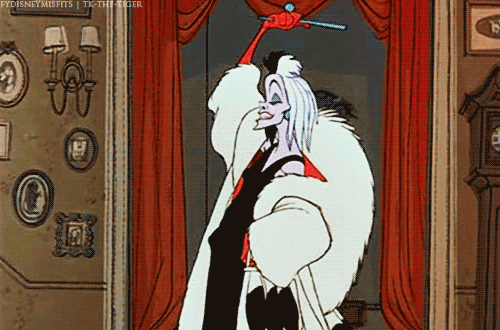
Gif via fuckyeahdisneyvillains
Throughout the years, our love for villains has flourished nowhere more noticably than in the popular animated tales of our childhood. Disney’s recent Maleficent may be the first time the studio has been so open about catering to the massive fanbase for its many memorable evil-doers.
But it doesn’t stop there. Disney has actually been catering to that love in a number of recent films. You just might not have noticed.
Cheering for the Away Team
Earlier this month, Disney released special U.K. editions of dozens of its beloved animated classics, all with one major thematic element:
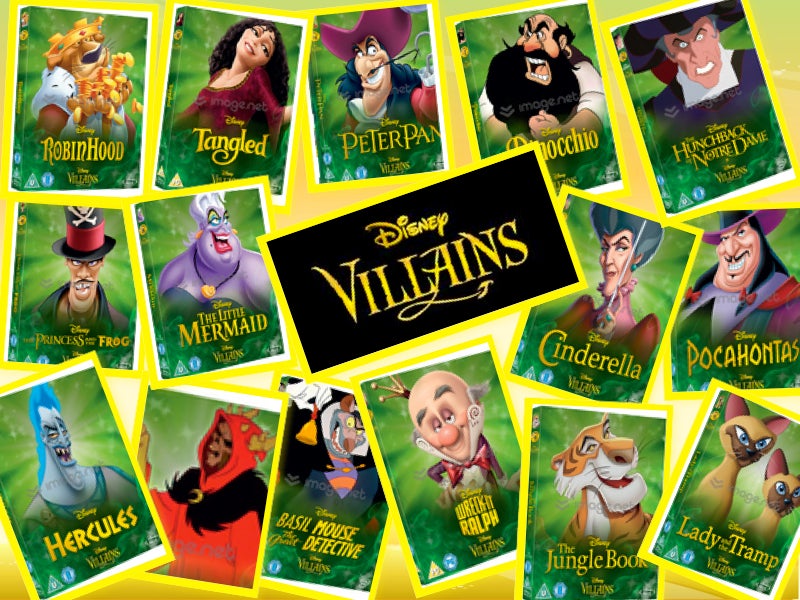
Illustration via London Mums
The message couldn’t be clearer, or more perfectly timed to coincide with the release of Maleficent. Disney’s marketing branch knows that you love rooting for the bad guys.
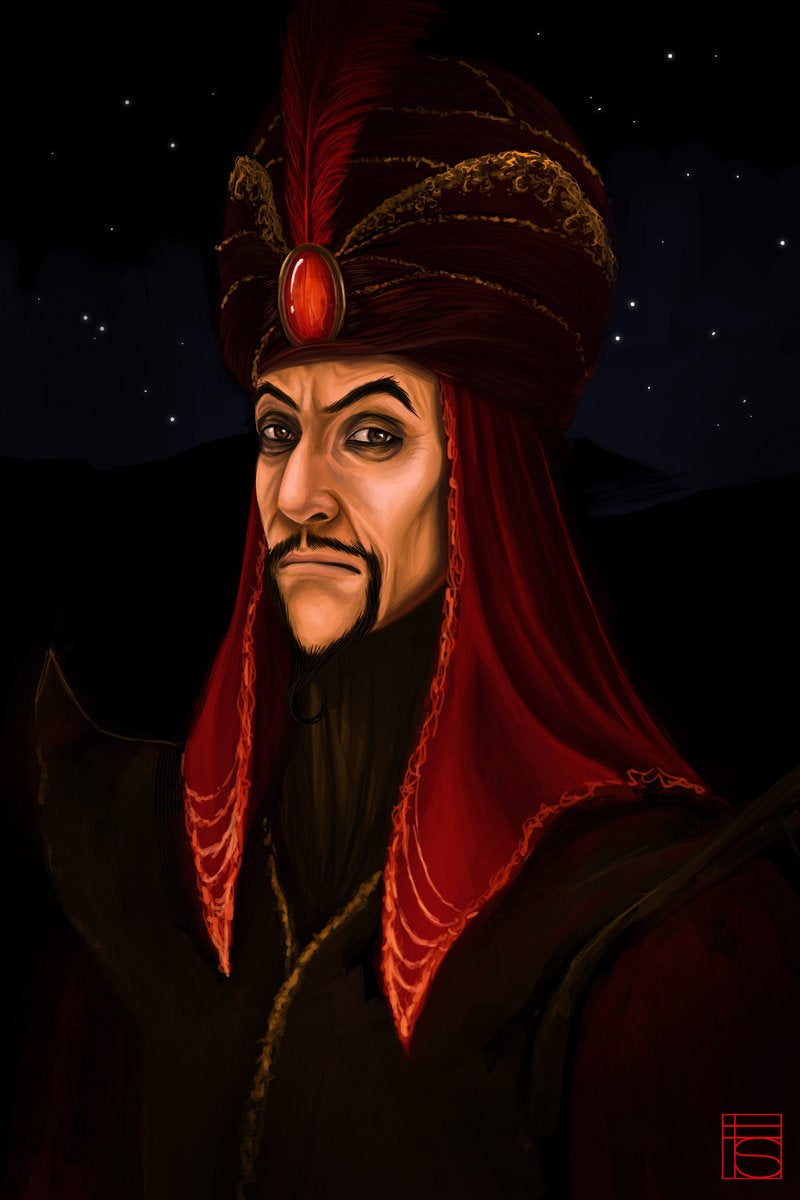
Jafar; Illustration by floorsteinz/deviantART
Beginning with the opening of its popular Villains in Vogue superstore on Sunset Boulevard in 1992, Disney has been increasingly willing over the years to embrace its more cynical fanbase. Disney maintains an entire Disney Villains sub-franchise for the express purpose of marketing its villains to an eager public. In 2012, it released a glamorous doll collection of female Disney Villains, complete with a slimmed-down Ursula and some modern-day tweaks to one character that left her looking unrecognizable:

Photo via Disney Store
Believe it or not, you’re looking at the once-frumpy Queen of Hearts from Alice in Wonderland. But she wasn’t the only one to get the glam treatment. Here’s what the Disney Store blog had to say about the doll version of Cruella de Vil, already a fashion maven:
Cruella is all about sparkle, from the jade green stones in her earrings and ring to the diamond-shaped stone in her plunging neckline. Cruella’s sparkling jewels and dress give her a modern, flashy look, while her trademark fur coat and hairstyle pay homage to her classic look.
Plunging neckline? Sparkle and flash? Isn’t this taking too much villain out of the villainness?
Not exactly. Disney villains have always been, well, of a type.
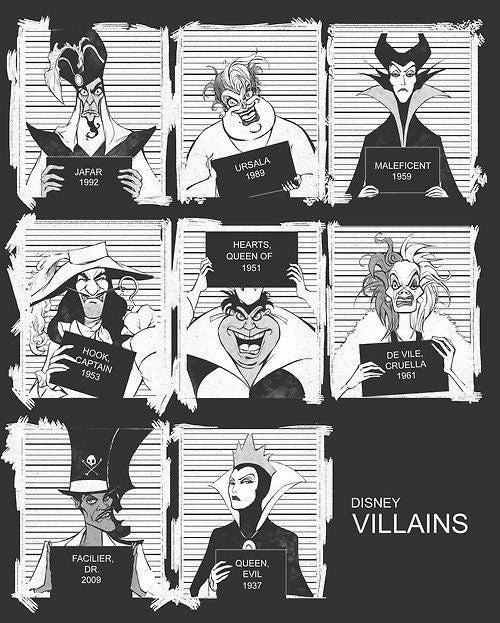
Illustration via intoasylum/Tumblr
High Ambitions and Even Higher Cheekbones
Can you tell a Disney villain just by looking at them? Actually, yes. The villains of Disney films tend to be upper-class and elegant, with specific fictional characteristics that mark them as evil:
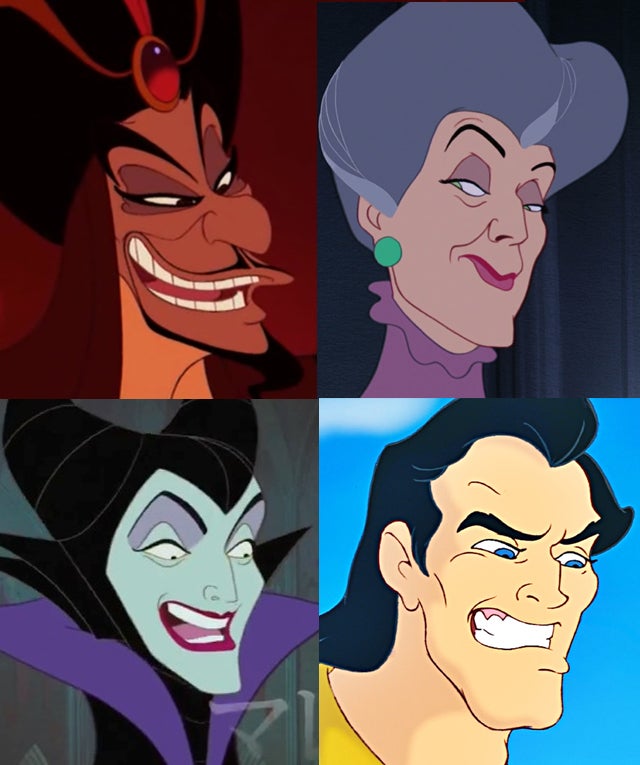
Photo by Aja Romano
Sharp, angular features, high cheekbones, arching eyebrows, hooked noses, and jutting chins are all physical staples of Disney villains. This even applies to the non-human variety:
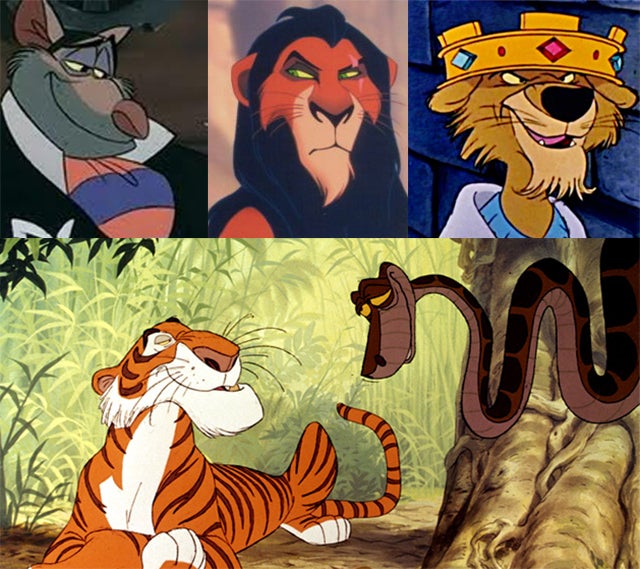
Photo by Aja Romano
High cheekbones and arched eyebrows are still present, and long snouts have replaced the jutting nose/chin combo. Unfortunately, these characteristics are all continuations of centuries of storytelling signifiers which have their roots in anti-Semitic and racist stereotypes. And that’s not even touching this:
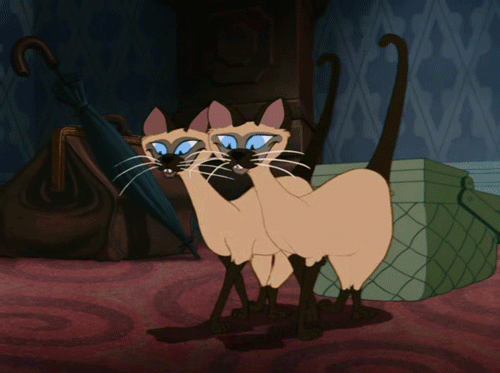
Gif via dolewhipdreamer
Yeahhhhhhhh. How we’d all like to forget that this actually happened. Note that the recent cover edition removes the destinctly racist overtones of the Siamese cat design, particularly the cross-eyed appearance and the two front teeth typical of vintage Eastern stereotypes.
You might hope that in recent years Disney has started to question and move away from these tropes—and you’d be right. Check out the appearance of King Candy, the archvillain in Wreck-It Ralph.
:
King Candy’s roly-poly appearance is significant on numerous levels. He represents the kind of physical archetype that’s usually indicative in animated films of the bumbling but well-meaning old man.
Unfortunately, there’s another glaring issue here: With his pink bow tie and slipper bells, purple suit jacket, stylized pose, and dandy-ish appearance, King Candy illustrates another problem that plagues male Disney villains: sissification.
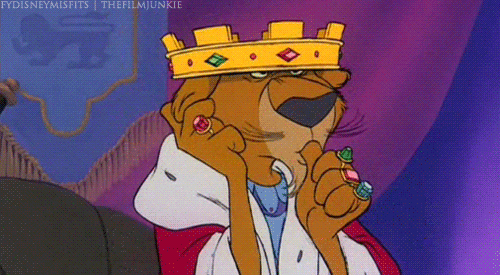
Gif via fyeahdisneymisfits
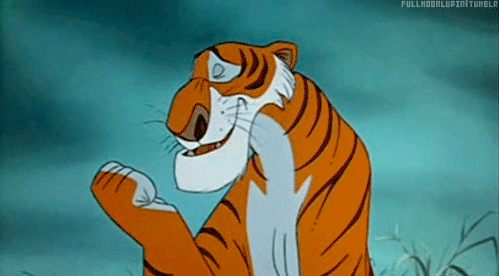
Gif via Fanpop
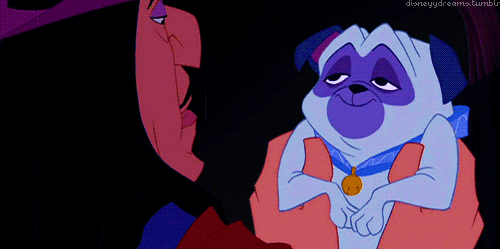
Gif via Monica’s Microblog
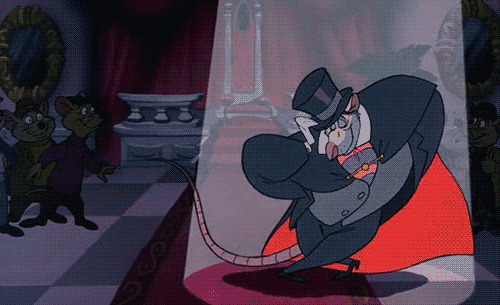
Gif via megamind-movie
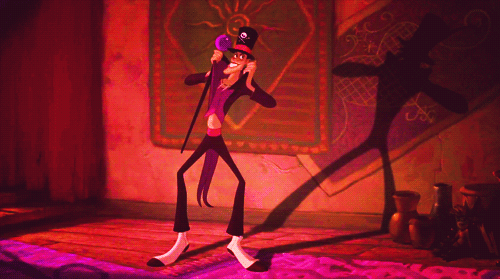
Gif via Wifflegif
Male characters who display “effeminate” characteristics in films may be code for multiple things: upper class status and prudishness are common. But by far the most common is the association of effeminacy with homosexuality. A character who preens, prances, and wears purples, reds, and pinks is not to be trusted in the Disney kingdom.
The longstanding coded representations of queer sexuality that dictate how we read certain characters on screen is still alive and well in Disney’s animated film tropes. At one point during his villain song, the pink-bedecked Governor Ratcliffe from Pocohontas sings: “It’s not that I’m bitter / But think how they’ll squirm / When they see how I glitter!” In other words, the male Disney villain’s queerness is inextricably linked to his evilness. In some cases, he’s quite literally flaming with it:

Gif via dolewhipdreamer

Gif via skunkandburningtires
The language of othering queerness by shaming male effiminacy necessarily involves shaming feminity itself. But women who eschew traditional feminity in Disney films often wind up villains anyway:
With the exception of the wicked stepmothers from Snow White and Cinderella, and Rapunzel’s evil surrogate mother in Tangled, most of the female villains in Disney films have rejected traditional social roles as wife and mother. The wicked stepmother is itself a holdover from traditional fairy tale tropes that paint surrogate or non-biological family bonds as false, evil, or superficial. Tangled’s Mother Gothel just sees mothering Rapunzel as a means to an end.
Likewise, any woman who hasn’t gotten married or settled down (or is at least working on it) in a Disney film is a woman whose motives are suspicious and whose real goals are often dangerous. Occasionally the way these women do feminity is mocked as well—though this seems to be one of the aspects of their personalities we love the best:
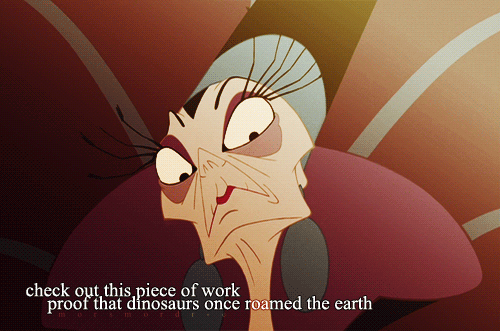
Gif via fuckyeahdisneyvillains
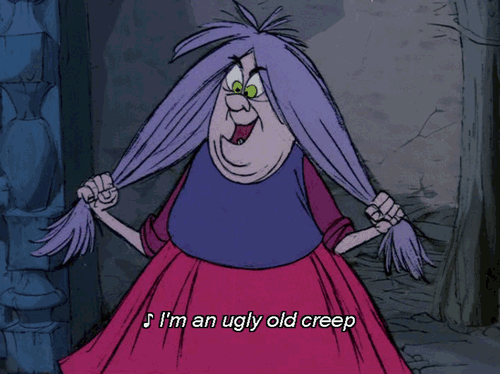
Gif via matamimmimi
In fact, just looking at Disney’s “old hags” reveals a fun and a playfulness that brings out the admiration in all of us.
So why do we love them?
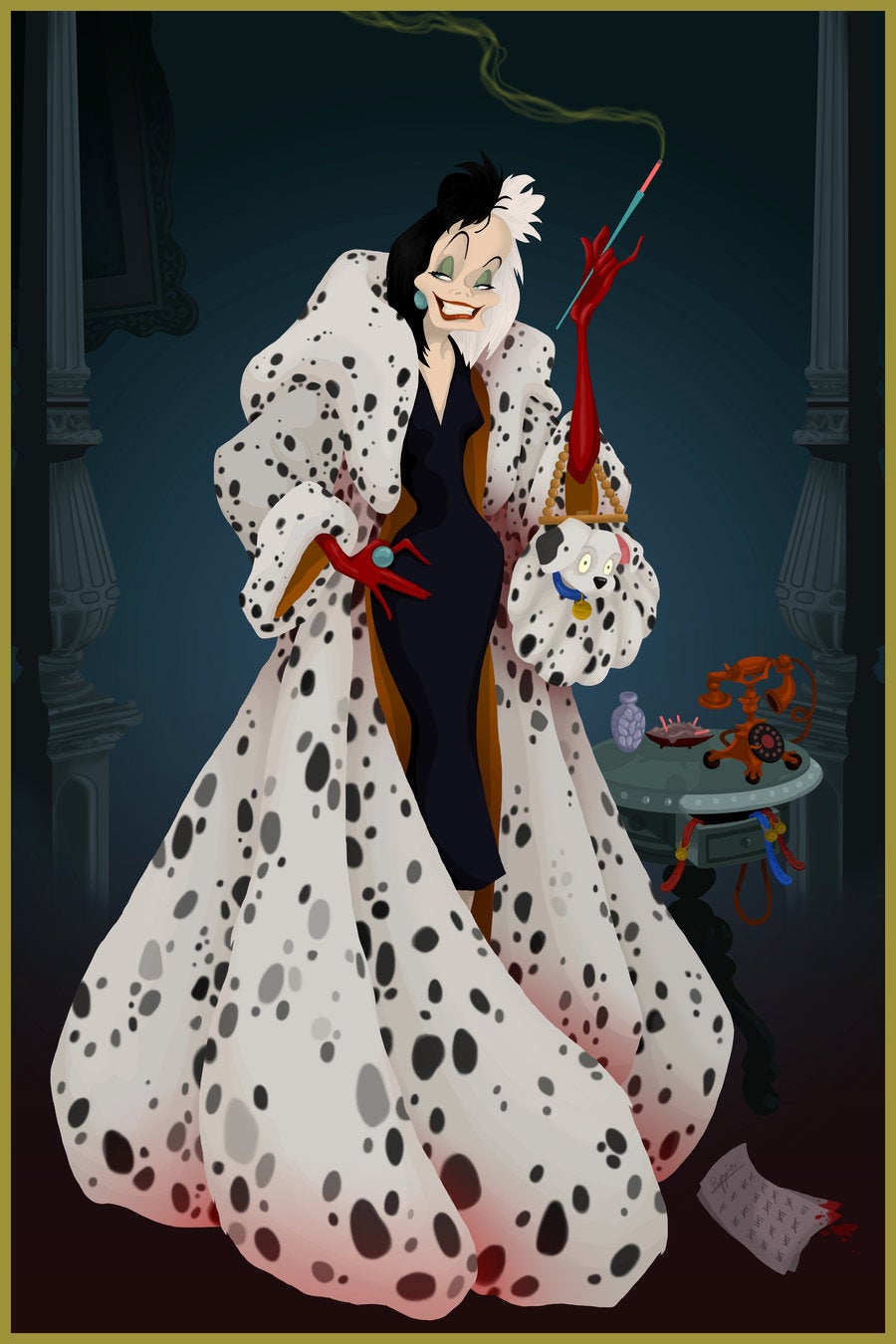
Illustration by Justin McTwisp/deviantART
Let’s face it. We all have a wild child inside, and nothing brings out the evil in all of us like the delightful fiendish glee of a Disney villain. Sure, there may be some problematic elements involved in the way these tropes play out over the years, but when you come right down to it, does any of that matter in the face of how awesome these bad guys are?
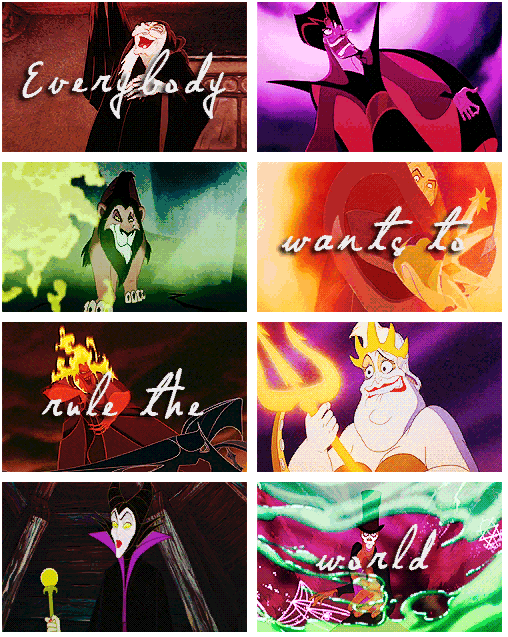
Gifset via detectivelindsay
I mean, who among us hasn’t wanted to skin the neighbor’s ugly little yippie dog and turn it into a fur coat, or skewer that stupid cute singing fish?
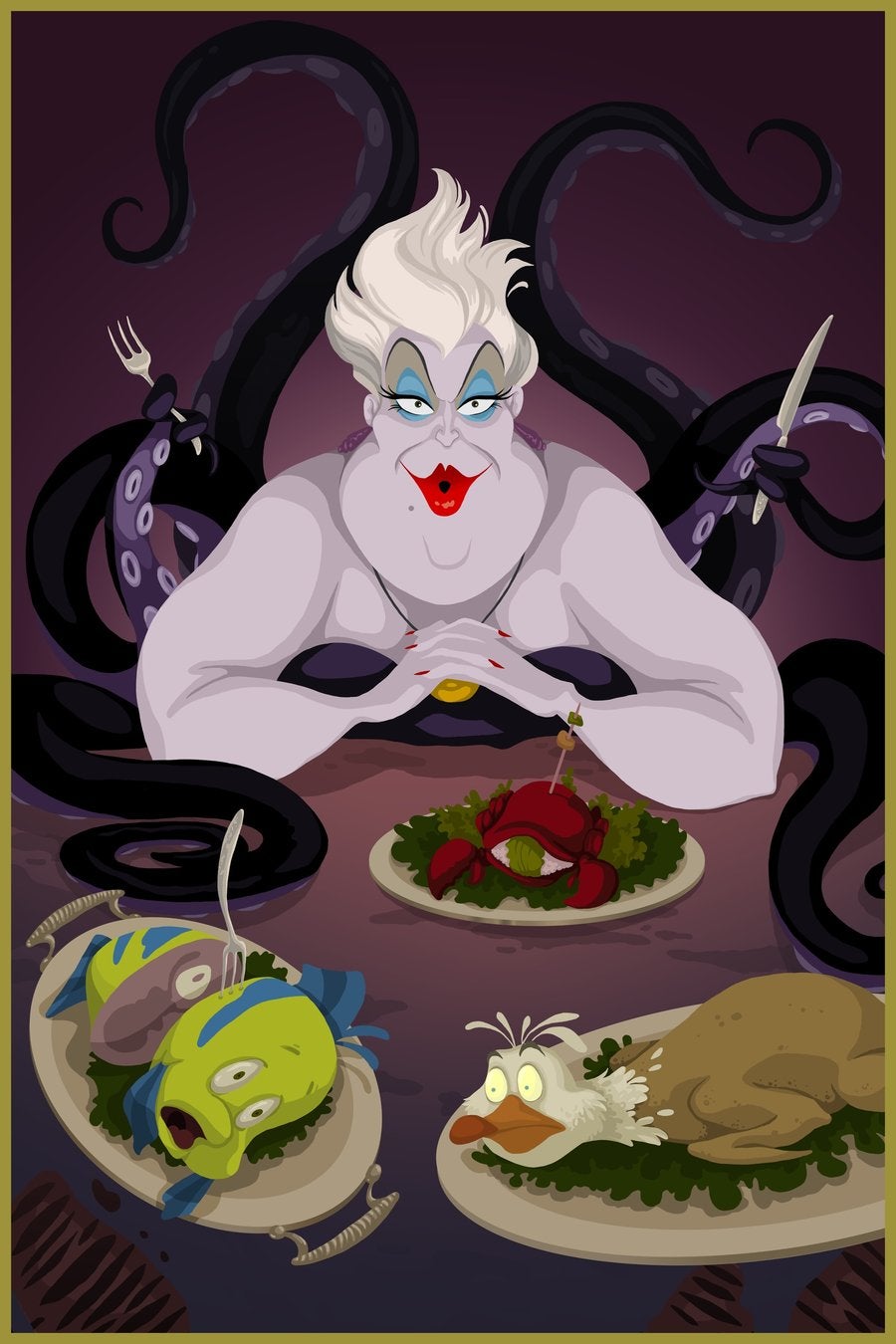
Illustration by Justin McTwisp/deviantART
Just to be clear we’re not advocating animal cruelty (leave those puppies alone), but there’s a wonderful sense of abandon that comes from giving into your darkest inner impulses—even if it’s just for a day at a con:
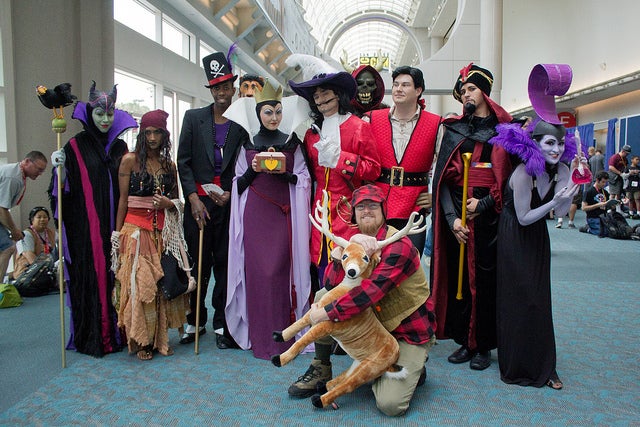
Photo via skylie-wilde/Tumblr
After all, it’s the villains who bring us many of the most memorable moments in all of the Disney classics. What’s the thing you remember most from Bambi, again? That’s right: Man, the ultimate evil.
Villains also have more fun than their angsty, conflict-ridden counterparts. Just look at Gaston. He fights like a wrestler, chows down like a lumberjack, and still gets all the ladies—well, most of them:
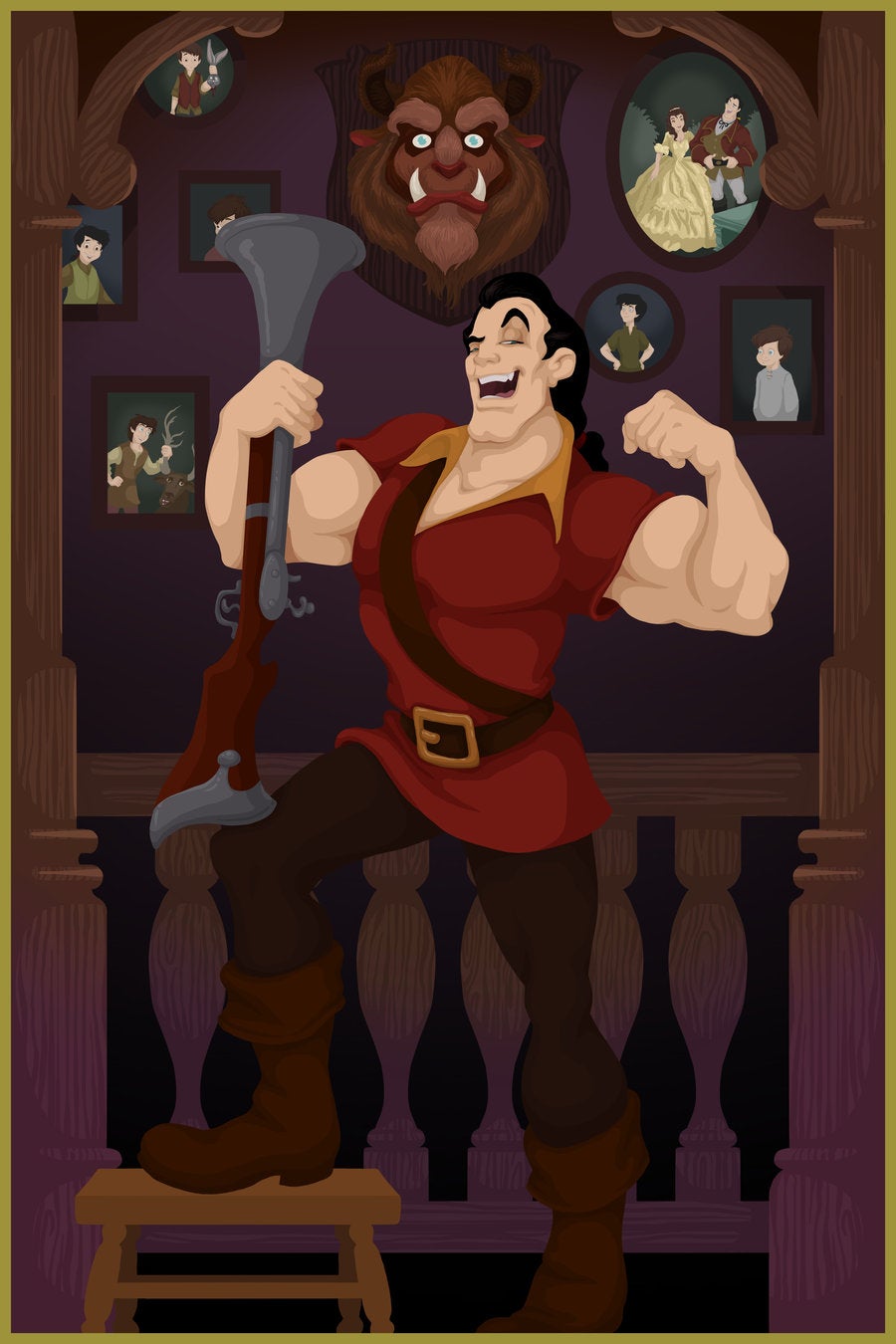
Illustration by Justin McTwisp/deviantART
One of the things villains allow us to do is not only root against the bad guy, but occasionally for the bad guy.
Recently, Tumblr user aladdin-s attempted a rundown of major Disney villains in the time-honored tradition of Tumblr—that is, with a hilariously over-simplified power point presentation. Although the point is to laugh with the presentations and not at them, this one also shows us how much there is to enjoy about our favorite bad guys. The whole Tumblr post, which currently has over 30,000 notes, is here in its entirety. Excerpted are a few slides that get the point across:
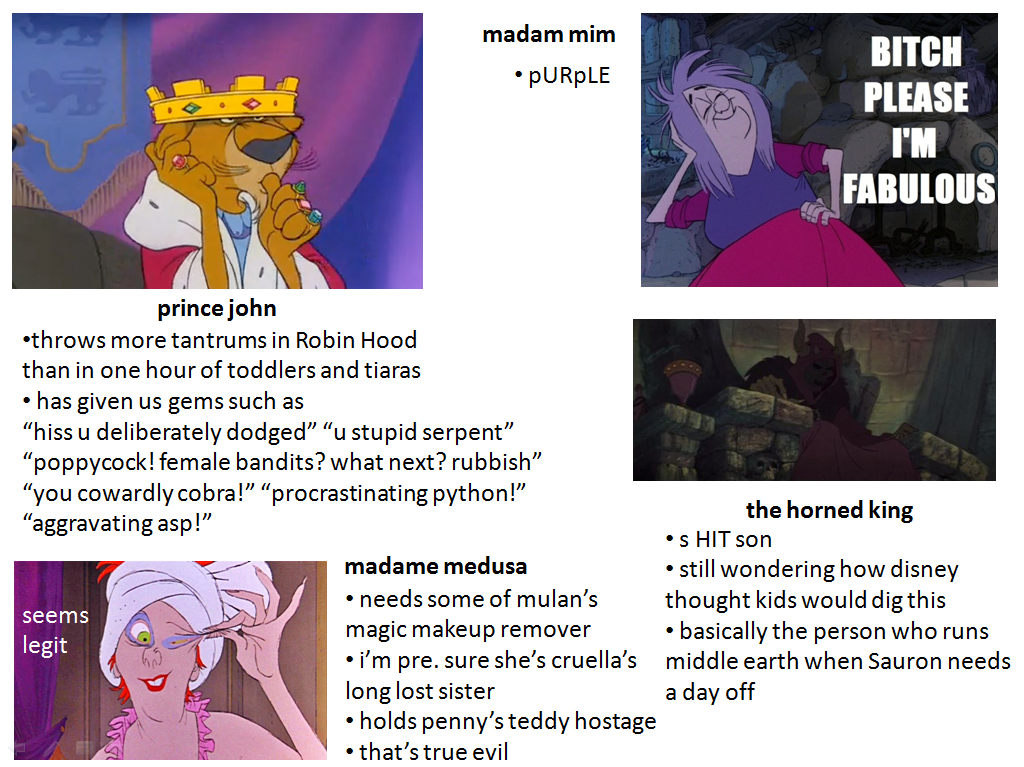
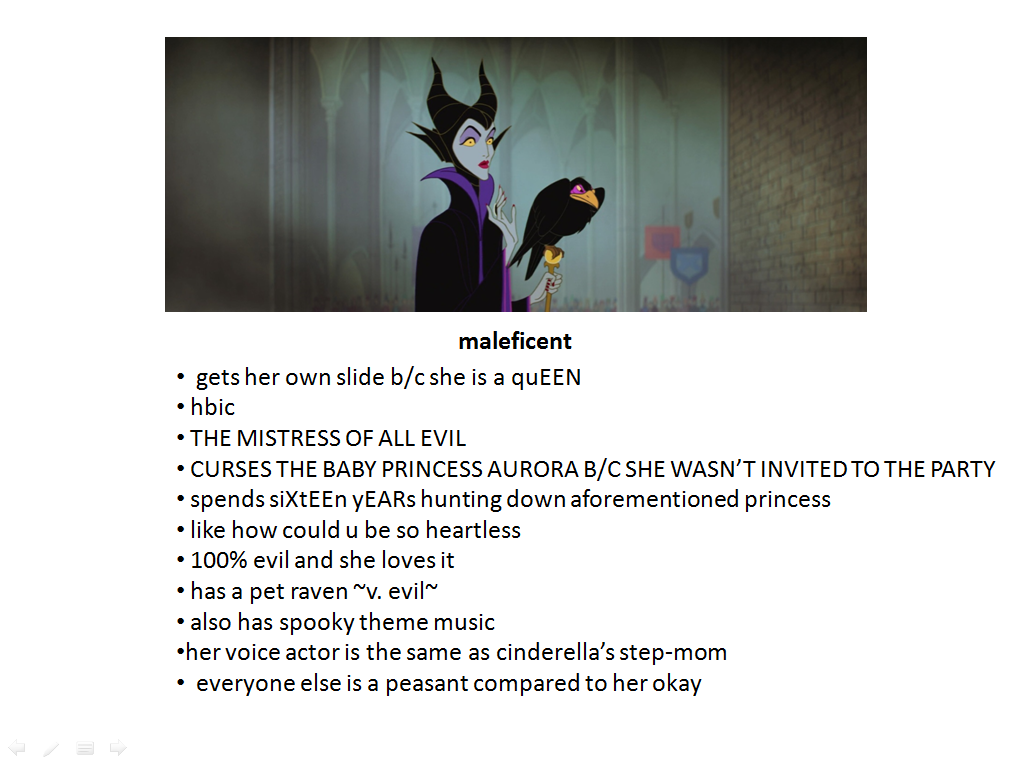

Photos via aladdin-s
Clearly there’s more going on here than just a wish to turn the tables. It’s actually easy to admire many of the Disney villains, even at their absolute worst—some for just how much style they bring to the business of evil-doing, and others for just how committed they are to their dastardly ways.
So what happens when you have a villain who’s not just a shallow one-dimensional bad guy?
For this reason and more, the character of Regina from Disney and ABC’s Once Upon a Time is an especially interesting figure in the pantheon of Disney villains.
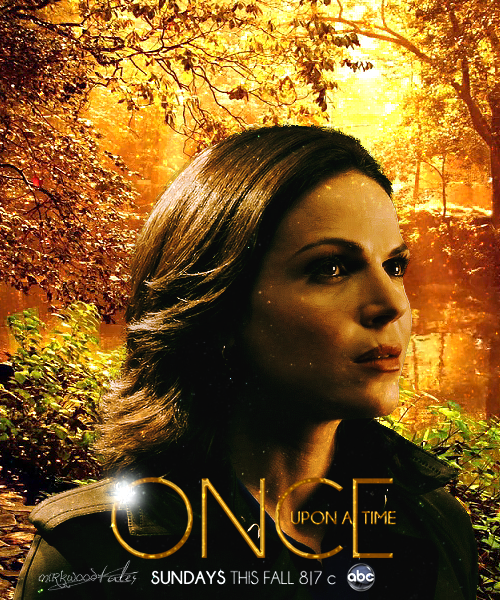
Illustration by elenoriel
On the surface, Regina is meant to be an amalgamation of a number of different Disney villain tropes: the evil queen, the wicked stepmother, the power-hungry ruler. In reality, while she does commit murder and other cold acts, she’s also shown to be a complicated and ultimately loving surrogate mother for her adopted son Henry.
“Have you ever considered that, perhaps, maybe, I am good?” Regina tells the character of Snow White at one point. “I was always the Queen, it was you who added “Evil” to my name.”
Once Upon a Time enjoys a rabid cult fandom in part because of the popularity of Regina as a character, and the large section of the fandom that ships Swanqueen, or the potential lesbian relationship developing between Regina and main character Emma Swan.
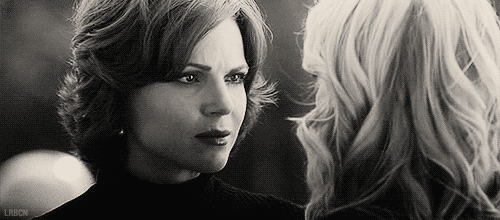
Gif via the-regina-mills-network
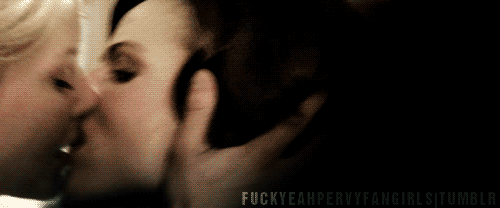
Gif via fuckyeahswanqueen
But Once Upon a Time‘s popularity also reveals the growing interest in a new kind of Disney fairy tale: postmodern, revisionist revisitations of beloved Disney classics.
Reviewing the Situation
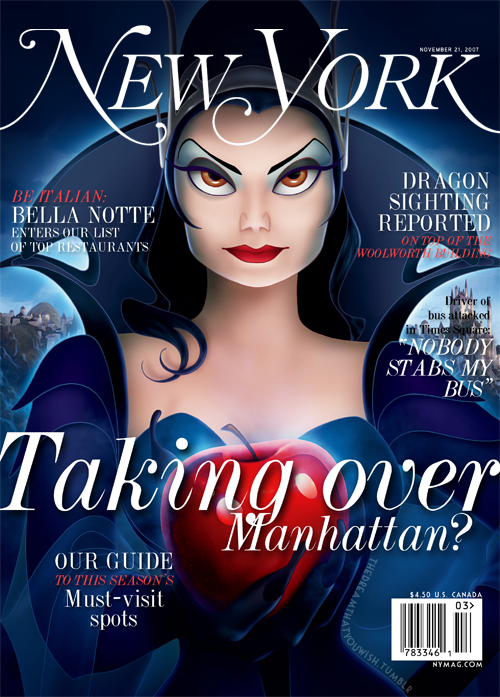
Illustration by thedreamthatyouwish
Since the revisionist fanfic-turned-blockbuster musical Wicked rewrote the story of the Wizard of Oz from the Wicked Witch’s point of view, sympathetic looks at villains have been all the rage. The year after Wicked became a smash hit on Broadway, Disney released a series of children’s books called “My Side of the Story.” The series ran for a year and included new takes on stories from Cinderella to Beauty and the Beast, from the point of view of their respective villains. Tumblr user shewaseliaofdorne recently shared a look at My Side of the Story: Sleeping Beauty:
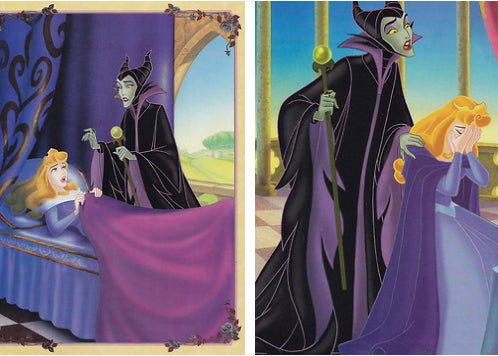
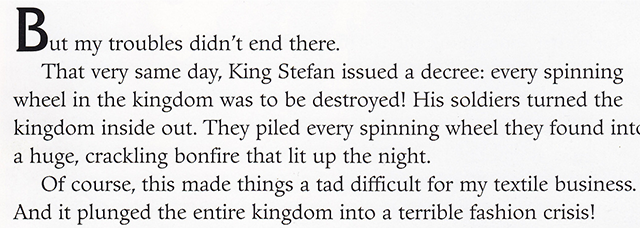
While this kind of take on the villain’s POV is facetious, it set the stage for the further examination of Disney’s classic texts to come. Recent Disney films have been textbook cases in deconstructing and remixing the timeless tropes that Disney’s animated films spent decades firming up to begin with. 2012’s Wreck-It Ralph, which is all about breaking down the concept of the good guy/bad guy dichotomy, follows in the footsteps of Pixar’s The Incredibles in its exploration of what it means to be a hero. The recently announced Disney Channel movie Descendents seems to be a Disney villains fanfic musical, with pixie-sized Broadway star Kristen Chenoweth, of all people, playing Maleficent.
Enchanted (2007) deserves mention as a kind of stepping stone toward what seems to be the new era of Disney deconstruction. A partially animated, live-action satire of the princess narrative, Enchanted utilizes wacky sendups of familiar Disney tropes, like princesses warbling their way through housework. In the end, while it still delivers a cheesy and tidy fairy tale ending, it takes an axe to love at first sight, an idea further dismantled in 2013’s blockbuster hit Frozen. And 2010’s Tangled continued the trend by tackling the idea of damsels in distress: Rapunzel doesn’t wait around to be rescued from her surrogate mother’s tower.
In retrospect, all of these tales seem like practice runs for Disney’s most recent offerings. Frozen originally had icy Queen Elsa as the movie’s true villain. What changed? When the film’s writers heard Elsa’s centerpiece song “Let It Go,” they realized they couldn’t simply let Elsa go unredeemed. Instead, while her sister Anna remains the true heroine of the fairy tale, Elsa has proven incredibly popular with Disney fans, who have churned out endless amounts of fanart and YouTube covers of her signature song, as well as an entire sub-fandom devoted to shipping her with Rise of the Guardian’s Jack Frost.
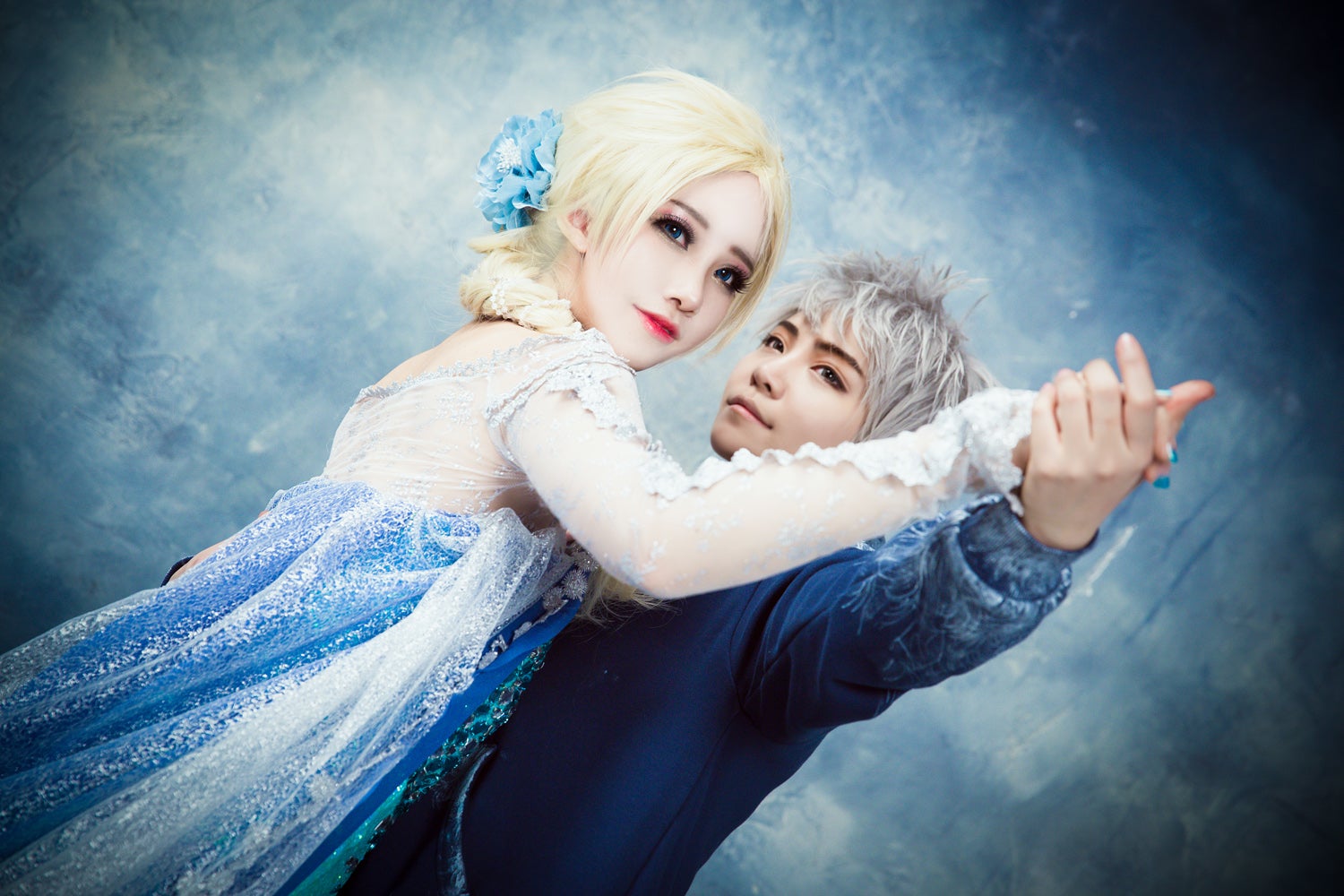
Photo by Lento via llento.woobi.co.kr
Similarly, the new Maleficent doesn’t try to villainize its titular character, even though as the villain from Sleeping Beauty she is often considered the most fearsome and powerful of any Disney villain.

Gif via Hollyscoop
Instead, the work of the film is to humanize her, giving her a complex backstory and creating a deep bond between her and princess Aurora. Ultimately, the film jettisons the original ending of Sleeping Beauty altogether, in order to allow Maleficent to write her own version of the ending.
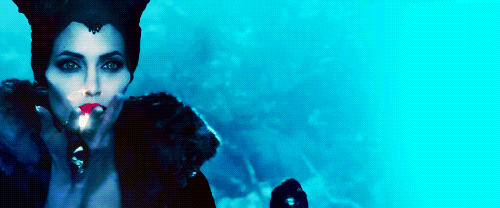
Gif via alessiavermillion
Finally, there’s the upcoming highly-anticipated Christmas release of the classic Sondheim musical Into the Woods, which literally wrote the book—OK, the libretto—on the kind of hybrid, chaotic fairy-tale crossover drama that Once Upon a Time has more or less turned into character soup at this point. While Disney’s adaptation of the film is inducing literal cries of alarm from fans horrified over the studio’s plans to simplify and censor many of the musical’s darker themes, Into the Woods is still a story in which the “villains” work with the good guys, and the story’s narration can be thrown away altogether in favor of something new. For Disney to align itself with that kind of message is a clear a meta-statement about the studio’s own evolutionary path.
Ultimately, Disney’s increasingly sympathetic take on villains seems to be a combined product of marketing, revitalizing old titles, and responding to a changing fandom that thoroughly critiques Disney properties. While revisionist fairy tales like Maleficent may seem like an attempt to soften the edges of the villains we love, it’s really just a way of expanding what we love about them.
And, of course, for those fans who like their villains to remain bad to the bone, there’s still plenty of evil left in the Disney pantheon.
It’s just updated its wardrobe.
Screencap via author-quest

